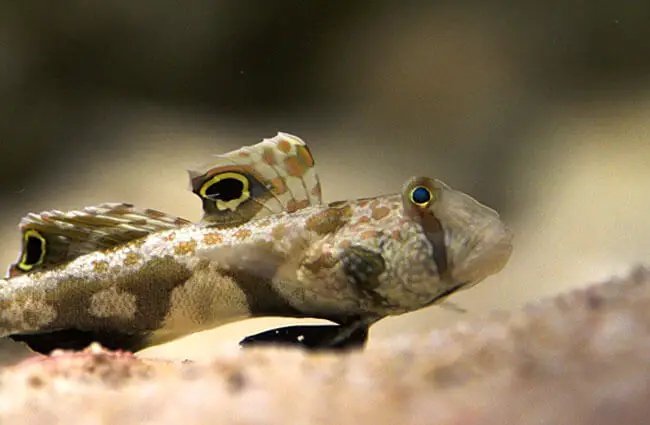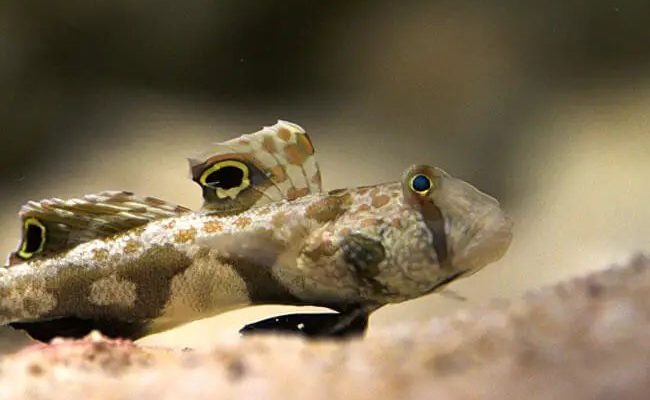
What makes gobies particularly interesting is their adaptability. They can thrive in various habitats, from coral reefs to muddy riverbanks. Plus, they often engage in unique behaviors and have intriguing relationships with other marine life. So, grab your coffee, and let’s dive into the top 10 fascinating facts about gobies that will make you appreciate these tiny underwater marvels even more!
1. Gobies Are Tiny But Diverse
One of the most remarkable aspects of gobies is their size. Typically, they range from just about an inch to around 12 inches long. You might be wondering how such small fish can exhibit so much diversity. Honestly, gobies exist in a stunning array of shapes, colors, and behaviors across over 2,000 species. From the vibrant colors of the clown goby to the reclusive nature of the mudskipper, gobies represent a world of variety within a single family.
This diversity isn’t just skin deep either! Each species has adapted to its environment in unique ways. Some gobies, like the sand goby, have specialized suckers that let them attach to rocks and corals, while others, like the mudskipper, can even venture onto land for short periods. This adaptability speaks to the resilience of gobies as they’ve made homes in some of the most challenging environments on Earth.
2. Unique Abilities: Out of Water and Onto Land
Have you ever heard of fish that can *walk*? Surprisingly, some gobies can! The mudskipper is a prime example of this unique ability. These little guys are famous for their impressive skill to navigate surfaces on land, often leaping from mud puddle to mud puddle. Imagine you’re watching a nature documentary, and you see a fish flopping around in the mud, using its fins to “walk.” It’s bizarre, yet fascinating at the same time.
Mudskippers thrive in intertidal zones where they come out of water to bask in the sun, find food, or even escape predators. They can survive out of water for quite a while due to their ability to absorb oxygen through their skin, making them the amphibians of the fish world. So next time you see a mudskipper, remember: it’s not just a fish; it’s an adventurer!
3. Symbiotic Relationships
Here’s the thing: gobies don’t just go about life solo. Many species engage in *symbiotic relationships*, particularly with shrimp. This partnership works like a well-oiled machine. The shrimp digs and maintains the burrow, while the goby keeps watch for predators. It’s almost like having a buddy system, where both help each other out.
Being watchful is crucial, especially in environments where danger lurks. The goby’s keen eyesight allows it to spot predators and warn the shrimp with a flick of its tail. It’s a great example of teamwork in the animal kingdom, where each partner plays a critical role in surviving the challenges of their habitat.
4. Colorful Characters
If there’s one thing gobies excel at, it’s showing off vibrant colors! Many species exhibit striking patterns and colors that make them visually stunning. From the bright yellows of the bicolor goby to the orange stripes of the clown goby, these fish are like the artists of the sea, painting their environments with their hues.
But there’s more to their colors than just being pretty. Often, these bright colors serve as a form of communication. Gobies use their colors during mating displays or to assert dominance. When a male goby turns brighter, it signals to females that it’s ready to mate. So, these colorful characters aren’t merely for show; they play a significant role in their social lives.
5. Gobies Are Masters of Camouflage
While gobies can flash vibrant colors, they also possess a remarkable ability to *blend in* with their surroundings. Many species use camouflage to escape predators. It’s like playing hide and seek, where the goby is the ultimate master of disguise.
For example, the rock goby can change its color to match the rocks or corals it’s hiding among. This ability to blend in makes it tough for hungry predators to spot them. Just imagine playing a game where you can change your appearance based on your environment; that’s what gobies do every day!
6. Importance in Aquatic Ecosystems
You might not think much about gobies, but they play a critical role in their ecosystems. They are often prey for various marine animals, including larger fish and birds. Their presence in the food chain supports the survival of other species, making them essential players in their habitats.
Additionally, gobies help maintain the health of coral reefs and aquatic environments. They contribute to sediment turnover, which is vital for maintaining ecosystem balance. Think of them as the little engineers of the underwater world, helping to create and sustain the environments many creatures depend on for survival.
7. Gobies in Aquariums
For those interested in fishkeeping, gobies are increasingly popular in home aquariums. Their diverse sizes and colors make them appealing, and they generally have easy care requirements. While they’re social creatures, it’s best to keep them with other gentle species that won’t bully them.
If you’re considering adding gobies to your aquarium, think about their natural habitats. They appreciate plenty of hiding spots, like caves or plants, and enjoy sand or gravel substrates. By mimicking their natural environment, you can help your gobies thrive while enjoying their playful antics.
8. Breeding Behavior
Gobies have fascinating breeding rituals that showcase their unique behaviors. Many species engage in elaborate courtship displays to attract mates. For instance, male gobies dance and puff out their bodies to impress females. It’s almost like a romantic dance in the underwater world!
Once a pair finds each other, they will often create nests, where the female lays her eggs. The male then guards the nest until the eggs hatch. This level of parental care is relatively rare in the fish world and highlights the commitment gobies have to ensuring their young survive.
9. The Electric Goby
You’ve probably heard of electric eels, but did you know that some gobies can generate electricity too? The *electrical goby* has the ability to produce mild electric shocks, which it uses to navigate its environment and communicate with other fish. Imagine holding a tiny battery while swimming underwater—that’s what it feels like for them!
This unique feature helps them adapt to their surroundings, particularly in murky waters where visibility is low. The electric goby’s ability to create small electrical fields not only aids in navigation but also helps them find food by detecting movements around them.
10. Gobies and Human Interaction
Finally, let’s talk about how gobies interact with humans. In some cultures, gobies are considered delicacies, often enjoyed in various dishes. Their small size and unique flavors have gained them a place on menus around the world.
However, gobies are also at risk due to habitat destruction from pollution and climate change. Awareness and conservation efforts are essential to protect these fascinating creatures. By understanding their importance in the ecosystem and appreciating their unique traits, we can all play a part in ensuring gobies continue to thrive in our waters.
In conclusion, gobies are more than just small fish; they are captivating creatures with a wealth of unique traits that make them essential to their ecosystems. Whether they are *walking* on land, flashing vibrant colors, or forming bonds with their shrimp buddies, gobies remind us of the incredible diversity of life in our oceans. So next time you encounter a goby, take a moment to appreciate the little marvels swimming beneath the waves!

